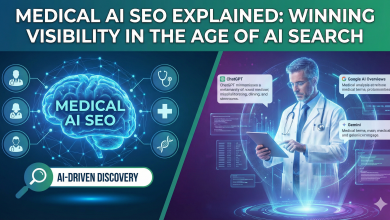Artificial intelligence (AI) has moved quickly from experimental phase to operational reality. As enterprises embrace new use cases across functions and industries, the conversation has shifted from potential to performance. Decision-makers are now asking a more pointed question: is AI delivering a measurable return? It is a sharp reminder that, despite its transformative promise, this new wave of AI is still in its infancy. We are only beginning to see how orchestration across systems, data, and workflows will unlock its true potential.
In many cases, that answer is not as clear as they would like. Short-term returns can be elusive, and defining success is far from straightforward. But that does not mean the value is not there. It simply requires a broader lens.
ROI is not always immediate
Many businesses expect AI to offer immediate financial returns. That is often unrealistic. True transformation takes time, particularly when systems, teams, and processes need to evolve in parallel.
Returns on AI investments frequently appear in ways that are not strictly financial. Improvements in operational efficiency, employee satisfaction, service quality, and resilience all matter, even if they do not show up directly on a balance sheet. These indicators are often the first signs that AI is having the intended effect.
Organisations that build long-term roadmaps and accept a phased approach tend to see more sustainable results. A short-term focus may drive fast experimentation, but a strategic mindset is what turns AI into a competitive advantage.
Alignment over experimentation
One of the most common pitfalls in enterprise AI adoption is the disconnect between ambition and strategy. Many organisations roll out pilots without clearly linking them to business goals. While this can generate initial momentum, it rarely delivers lasting value.
AI projects must be grounded in real problems. Whether it is streamlining service processes, improving decision-making, or reducing operational bottlenecks, the use case should define the technology, not the other way around.
This mindset helps ensure that AI is integrated into the business, rather than layered on top of it. When that happens, the technology becomes far more than an automation tool. It becomes an enabler of broader change.
The kind of impact that matters
Where AI is delivering results, it is often by improving the day-to-day performance of teams. For example, organisations that have used AI to summarise and hand over case files have reported a reduction in support handover times. This allows employees to focus on solving issues rather than briefing each other.
Other businesses have automated thousands of customer interactions per month, reducing response times and improving consistency. Many are using AI to instantly acknowledge new support cases, ensuring customers feel heard immediately.
These examples highlight the kind of value that is often underreported. Not dramatic headline savings, but incremental improvements that enhance both employee experience and customer satisfaction. These gains add up, and they last.
Measuring success differently
One challenge in proving AI’s worth lies in measurement. Traditional ROI models focus on revenue or direct cost savings. But AI often delivers value through time saved, errors avoided, or decisions improved.
CIOs need to look beyond basic financial metrics. Success might be reflected in faster case resolution, increased customer engagement, higher employee productivity, or better use of internal data.
That said, clarity is essential. Setting outcome-based KPIs at the outset helps create accountability and structure. It also makes it easier to assess whether a pilot is worth scaling, and where future investment should be focused.
Equally important is managing expectations. AI requires model training, systems integration, and change management. Leaders should communicate that upfront. A realistic timeline does not mean a lack of ambition. It is simply a recognition of the complexity involved.
From pilots to orchestration
The future of enterprise AI will not be defined by more isolated tools. It will be defined by integration. Businesses are starting to focus on how AI connects across systems, supports workflows and improves outcomes at scale.
That means treating AI as a core business layer, not a separate initiative. It should interact with data, people, and platforms seamlessly. To do that, organisations need more than technology. They need change-ready cultures, upskilled teams, and scalable infrastructure.
Successful AI deployments increasingly look less like IT projects and more like operating model redesigns. That is a sign of maturity, and one of the clearest indicators that real ROI is within reach.
The most exciting opportunities lie ahead, in what we call the ‘agentic future’, where AI will not just automate tasks but orchestrate complex processes across suppliers, customers, and employees. While this remains experimental today, early signs are clear: integration, not isolated pilots, will define tomorrow’s winners.
Final thoughts: Redefining ROI for the AI Era
Enterprises that achieve the most substantial returns from AI are not always the ones with the most cutting-edge tools. They are the ones with clarity of purpose. They define what they are trying to solve, deploy with intent, and measure outcomes that matter.
AI is a long-term play. Those who recognise that we are still at the beginning and treat today’s gains as building blocks towards an orchestrated, agentic future will be best placed to convert experimentation into enduring advantage. The returns are real, but they are not always immediate or linear. To unlock its full value, businesses must shift the conversation from hype to impact and focus not just on what AI can do but on what the business actually needs.




